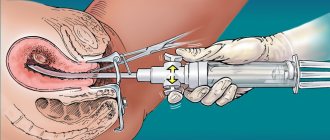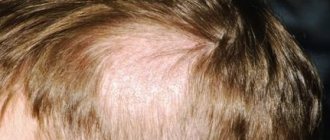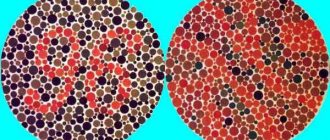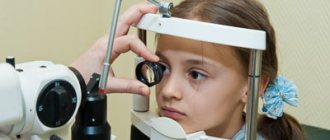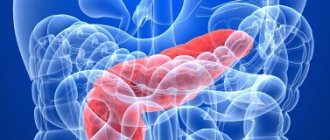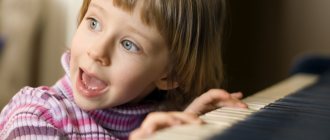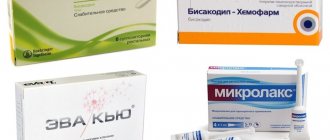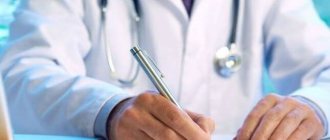Autism is not one disease, but a large complex of neurodevelopmental disorders of various origins, referred to as autism spectrum disorders (ASD) . According to modern data, the frequency of occurrence is 5:1000 (source: Charles Njokiktien "Children's Behavioral Neurology", 2018). It occurs 4 times more often in boys than in girls. The apparent increase in the incidence of ASD (according to old data, the prevalence was 4:10,000) is associated with improved diagnosis and expansion of its criteria. The concept of the spectrum itself appeared relatively recently, in 2013, when the new edition of DSM-5 was adopted; before that, only certain types of autism were considered. According to the International Classification of Diseases, 10th revision (ICD-10), childhood autism (F84.0), atypical autism (F84.1), Rett syndrome (F84.2), Asperger syndrome (F84.5) and several others are currently distinguished forms However, in ICD-11, which has already been adopted in many countries (in our country it will be in force from 2022), “autism spectrum disorder” appears as the main nosological unit, and its forms are distinguished based on existing intellectual and language deficits, for example: “ASD with intellectual development disorder and with mild or absent functional language impairment”, “ASD without intellectual development disorder and with functional language impairment” and others.
ASDs can vary in severity and pathogenetic mechanisms, which greatly influences the clinical presentation, prognosis and social adaptation.
Competition "bio/mol/text"-2018
This work was published in the “Free Topic” category of the “bio/mol/text” competition 2018.
The general sponsor of the competition is: the largest supplier of equipment, reagents and consumables for biological research and production.
The audience award was sponsored by the medical genetics center Genotek.
"Book" sponsor of the competition - "Alpina Non-Fiction"
If you know one person with autism, then you know one person with autism. Stephen Shore , professor at Adelphi University (USA), diagnosed with autism
For the average person, when the term “autism spectrum disorder” (ASD) is mentioned, the image of the main character of the film “Rain Man” will most likely pop up in his head, and that’s probably all. In the post-Soviet space, the topic of ASD is not sufficiently covered, and diagnosis in most cases is far from perfect [1]. The number of children with autism spectrum disorders increases every year around the world. Doctors talk about various reasons: an improved diagnostic system, suspicion of the influence of early vaccination, the harmful effects of the notorious GMOs, and even the older age of future fathers. So what is ASD and what have scientists already learned about the reasons for its development?
Autism spectrum disorder ( ASD ) is a neurodevelopmental disorder characterized by deficits in social interactions and communication with the presence of stereotypies (repetitive behaviors) [2], and according to 2014 United States data, it is diagnosed in one in 59 children [ 3]. In Russia, the prevalence is one case per 100 children, but much fewer people receive an official diagnosis [1]. ASD is diagnosed across all racial, ethnic, and socioeconomic groups and is five times more common in boys than girls [4]. The cause of the disease is currently unknown, but it is thought to arise from a complex interaction between genetic, epigenetic and environmental factors [5], [6] (Fig. 1).
Figure 1. Causes of ASD
[5]
Until May 2013, the official diagnoses of the autism spectrum in the American Diagnostic and Statistical Manual of Mental Disorders (DSM) included: autistic disorder, pervasive developmental disorder not otherwise specified (PPD-NOS), syndrome Asperger's, childhood disintegrative disorder and Rett syndrome. Today, in the latest, fifth edition of the DSM, there is only one diagnosis - "autism spectrum disorder" with three levels of severity, but many therapists, clinicians, parents and organizations continue to use terms such as BDD-NOS and Asperger syndrome [2].
The myth about post-vaccination
There is an opinion that autism develops in a child after vaccination of young children. However, such a theory has absolutely no evidence base. Many scientific studies have been conducted, and none of them have found a connection between vaccination and the occurrence of the disease.
It may happen that the time when the child was vaccinated simply coincided with the moment when the parents noticed the first signs of autism. But not more. Misconception in this matter led to a sharp decrease in the level of vaccination of the population, and as a result to outbreaks of infectious diseases, in particular measles.
Symptoms
Autism spectrum disorder is often characterized by problems in patients' social, communication and intellectual abilities. Depending on age and intelligence, children with autism exhibit varying degrees of communication deficits. These deficits include speech delays, monotonous speech, echolalia (uncontrolled automatic repetition of words heard in someone else's speech), and range from poor comprehension to complete absence of spoken language. Nonverbal communication is also impaired and may include difficulty making eye contact and difficulty understanding facial expressions and gestures. Another important characteristic of people with ASD is a deficit in socio-emotional reciprocity (Fig. 2) [7].
Figure 2. Symptoms of ASD
[39], figure adapted
Simply put, children with autism spectrum disorder are uninterested in interacting with people, have difficulty understanding people, like to adhere to various rituals, are prone to repetitive body movements, and may have language problems and delays in intellectual development. Various symptoms lead to significant impairment in many areas of adaptive functioning. At the same time, children with ASD often have many strengths: perseverance, attention to detail, good visual and mechanical memory, a tendency to monotonous work, which can be useful in some professions.
Psychosomatics of autism in children
Many psychiatrists believe that the causes of autism should be sought in early infancy (from 0 to 8 months). Experts are confident that in most cases the cause of the disease is psychosomatics.
Children close themselves off from the outside world and lose the skill of communicating on a subconscious level, for example, when they lose a sense of safety and security, when they are often surrounded by abuse, shouting, complaints, etc.
In infancy, the psyche of children is very weak and vulnerable, and in order not to experience stress, there is complete detachment from the external environment, from all irritating factors.
Psychotherapists notice that children in a calm and quiet environment begin to show a desire to communicate and feel comfortable.
So, the psychosomatics of autism in children is a kind of protective reaction to stress.
Medical history
The term “autism” has been used for over 100 years (since 1908). It was first coined by Eugen Bleuler, a Swiss psychiatrist, and was used to describe patients with schizophrenia who were particularly self-absorbed. The term autism, which Bleuler used, comes from the Greek word autós, which means “oneself.” It was intended to describe the “isolated self” that he saw in people with schizophrenia [8]. In fact, these diagnoses are different because a child with autism does not have hallucinations, illusions, they do not use speech to convey their irrational thoughts, because they often do not use speech at all. In addition, children with ASD have stable symptoms throughout their lives, and a diagnosis of schizophrenia usually involves periods of remission.
In 1943, a doctor named Leo Kanner conducted observations of groups of children who had previously been considered mentally retarded. He noted that the children had difficulties in social interaction, anxiety when deviating from their usual way of life, echolalia, a limited repertoire of spontaneous activity, but at the same time good intellectual potential, good memory, and hypersensitivity to sensory influences. Kanner coined the term “early childhood autism” (ECA) to describe a set of symptoms in the children he studied [8].
German scientist Hans Asperger described a “milder” form of autism in 1944, which until today was known as Asperger syndrome. He described cases of boys who were very intelligent but had problems with social interactions. He noted that the children had difficulties with eye contact, stereotyped words and movements, and resistance to change, but they did not have speech and language deficits. Unlike Kanner, Asperger also noted problems with coordination in these children, but at the same time more abilities for abstract thinking. Unfortunately, Asperger's research was not discovered until three decades later, when people began to question the diagnostic criteria used at the time. It was not until the 1980s that Asperger's work was translated into English, published and became known [8], [9].
In 1967, psychiatrist Bruno Bettelheim wrote that autism does not have an organic basis, but is the result of being raised by mothers who consciously or unconsciously did not want their children, which in turn led to reticence in their relationships with them. He argued that the main cause of the disease was negative parental attitudes towards infants during the critical early stages of their psychological development [10].
Bernard Rimland, a psychologist and father of a child with autism, disagreed with Bettelheim. He couldn't accept the idea that his son's autism was either his parenting or his wife's. In 1964, Bernard Rimland published Infantile Autism: A Syndrome and Its Implications for the Neural Theory of Behavior, which pointed the direction for further research at that time [8].
Autism became better known in the 1970s, but at that time many parents still confused autism with mental retardation and psychosis. Scientists have begun to clarify the etiology of the disease: a 1977 study of twins showed that autism is largely due to genetics and biological differences in brain development [10]. In 1980, the diagnosis of infantile autism was first included in the Diagnostic and Statistical Manual of Mental Disorders (DSM); the disease is also officially separated from childhood schizophrenia. In 1987, the DSM replaced "infantile autism" with the broader definition of "autistic disorder" and included it in the third revision. At the same time, psychologist and Ph.D. Ivar Lovaas published the first study showing how intensive behavioral therapy could help children with autism, giving parents new hope (Figure 3) [8], [9]. In 1994, Asperger's syndrome was added to the DSM, expanding autism spectrum diagnoses to include milder cases [10].
Figure 3. Scientists who have contributed to the study of autism spectrum disorders
sciencenews.org, findagrave.com, psycho.by, orthomolecular.org and uvmeste.ru
In 1998, a study was published showing that the measles, mumps, and rubella (MMR) vaccine causes autism. The results of this study were disproved, but it attracted enough attention to cause confusion to this day (Figure 4) [9]. Today, there is no scientific evidence confirming the connection between vaccination and ASD [11]. Sadly, as recently as August 2021, a report came out saying that more than 50% of people in some European countries still believe that vaccines cause autism [12].
Figure 4. Fragment of a picture about the connection between ASD and vaccines
[13], figure adapted
Finally, in 2013, the DSM-5 combined all subcategories of the condition into one diagnosis of autism spectrum disorder, and Asperger syndrome is no longer considered a separate condition [8–10].
Testing a child at home
You can detect the presence of autism in a child at home using various tests. At the same time, you should know that test results alone are not enough to make a diagnosis, but this will be another reason to contact a specialist. There are many tests designed for children of a certain age:
- testing the child on general development indicators, intended for children under sixteen months of age;
- M-CHAT test or modified autism screening test, for children sixteen to thirty months;
- The CARS Autism Rating Scale is used to test children aged two to four years;
- The ASSQ autism screening test is available for children aged six to sixteen.
M-CHAT test or modified autism screening test
Questions:
- Does your baby enjoy being rocked on your lap or in your arms?
- Does the child show interest in other children?
- Does your child like to use objects as steps and climb up them?
- Does your child like to play hide and seek?
- Does the child imitate actions during play (pretend to be talking on the phone or rocking a doll)?
- Does the child use the index finger when necessary?
- Does he use his index finger to emphasize his interest in some action, object or person?
- Are the toys used by the child for their intended purpose (rolling cars, dressing dolls, building forts from blocks)?
- Has the child ever focused on objects that interested him, bringing them and showing them to his parents?
- Is the child able to maintain eye contact with adults for more than one or two seconds?
- Has your baby ever shown signs of hypersensitivity to acoustic stimuli (asking to turn off the vacuum cleaner, covering his ears when listening to loud music)?
- Does the child respond to smiling?
- Does the child repeat the movements, intonation and facial expressions of adults?
- Does the child respond when his name is called?
- When pointing to an object or toy in the room, will the child look at it?
- Can the child walk?
- If you look at any object, will the child repeat your actions?
- Have you noticed your child doing unusual things with his fingers near his face?
- Does the baby try to attract attention to himself and his actions?
- Does your child appear to have a hearing problem?
- Does the child understand what the people around him are talking about?
- Have you ever noticed your baby wandering aimlessly or doing things automatically, giving the impression of complete absence?
- When meeting strangers or encountering incomprehensible phenomena, does the child look into the parents' faces to observe their reaction?
Transcript of the test
For each test question you should answer “Yes” or “No”, and then compare the results obtained with those given in the transcript:
- No.
- No (critical point).
- No.
- No.
- No.
- No.
- No (critical point).
- No.
- No (critical point).
- No.
- Yes.
- No.
- No (critical point).
- No (critical point).
- No (critical point).
- No.
- No.
- Yes.
- No.
- Yes
- No.
- Yes.
- No.
Best materials of the month
- Coronaviruses: SARS-CoV-2 (COVID-19)
- Antibiotics for the prevention and treatment of COVID-19: how effective are they?
- The most common "office" diseases
- Does vodka kill coronavirus?
- How to stay alive on our roads?
If the answers to three ordinary points or two critical ones coincide, then such a child should be consulted by a specialist.
Causes of ASD
The exact cause of autism spectrum disorder (ASD) is currently unknown. It can arise as a result of genetic predisposition, environmental or unknown factors, that is, ASD is not etiologically homogeneous. There are likely many subtypes of ASD, each with a different origin.
Genetics
It is assumed that the development of ASD is largely due to the influence of genetic factors. Adding support for genetics as a cause is research showing that ASD is more common in boys than girls, most likely caused by genetic differences associated with the Y chromosome [14]. The theory is also supported by studies of twins with ASD, which determined concordance rates ( concordance is the presence of a certain trait in both twins) for monozygotic (60–90%) and dizygotic (0–10%) twins [15]. High concordance in pairs of monozygotic twins and significantly lower concordance in pairs of dizygotic twins indicate a significant role of genetic factors. In a 2011 study, nearly 20% of infants with an older biological sibling with ASD also had ASD, and if there were more than one older sibling, the likelihood of being diagnosed with ASD was even higher [16].
Researchers estimate that there are 65 genes that are considered strongly associated with autism, and 200 genes that are weaker associated with this diagnosis [17]. Genome-wide association studies (GWAS) confirm the contribution of common allelic variance to ASD, including single nucleotide polymorphism (SNP) and copy number variation (CNV) [18]. When examining the parents of patients, a large contribution of de novo CNV to ASD was found [19] ( de novo mutations, or variations , are mutations that no family member had and appeared for the first time in the patient). According to 2014 data, de novo and CNV gene mutations affect the occurrence of the disease in approximately 30% of cases [20]. A 2011 analysis of 1,000 families linked two chromosomal regions, 7q11.23 and 16p11.2, to autism [21], but in 2015 Sanders and colleagues, in a study of 10,220 individuals from 2,591 families, showed [17] that CNVs an additional four regions were equally likely to be true candidates for autism-associated variation. In September 2018, an article was published reporting that Japanese people with autism and schizophrenia have overlapping CNVs [22]. Recent studies of ASD cohorts report relatively high rates of de novo mutations in noncoding regions of the genome, as well as small exome mutations, that is, coding regions of the genome that include both known and previously undetected candidate genes associated with ASD (Figure 5 ) [23], [24].
Figure 5. Genetic disorders associated with ASD
peds.ufl.edu, picture adapted
Neurobiological factors
Genetic abnormalities can lead to abnormal mechanisms of brain development, which in turn leads to structural and functional, as well as cognitive and neurobiological disorders. Neurobiological differences associated with an ASD diagnosis include structural and functional brain pathologies, including:
- increased gray matter in the frontal and temporal lobes [25];
- decreased white matter compared to gray matter in adolescence [26];
- anatomical and functional differences in the cerebellum and limbic system [26].
Researchers in 2021 found that boys with ASD have smaller fractal dimension (a measure of the structural complexity of an object) in the right side of the cerebellum than healthy children [27].
Some studies have focused on the hypothesis that disrupted interactions between brain regions are the main cause of ASD [28], while other researchers are studying molecular causes, such as disruptions in the functioning of certain types of neurons (eg, mirror neurons) or disturbances in neurotransmission ( signal transmission between neurons) [29].
Other reasons
More and more researchers are writing about environmental causes that may contribute to autism. Research has identified a number of potentially hazardous substances that may be associated with the development of ASD: lead, polychlorinated biphenyls (PCBs), insecticides, automobile exhaust, hydrocarbons and flame retardants [25], but so far none of these substances has been proven to have a trigger. influence on the occurrence of ASD.
There is also increasing interest in the role of the immune system in the etiology of disease. June 2021 reported that 11.25% of children with ASD have food allergies, significantly higher than the 4.25% of children with allergies without a diagnosis, adding to the growing body of evidence pointing to immunological dysfunction as a possible factor risk for ASD [30].
There have also been recent studies that have linked deficiencies in the diet of pregnant mothers and the presence of elevated levels of pesticides in the blood with the diagnosis of ASD in their children [31–33].
Diagnostics
A child with developmental delays should be examined by a doctor to find the cause of the developmental delay. If a child exhibits any symptoms of autism spectrum disorder, he will most likely be referred to specialists for consultation, for example, a child psychiatrist, child psychologist, or pediatric neurologist.
Proper diagnosis requires consideration of the patient's complete history, physical examination, neurological examination, and direct assessment of the child's social, language, and cognitive development. Sufficient time should be provided for standardized interviews of parents regarding current problems and behavior history, as well as structured observation of social and communicative behavior and play.
A new blood test can detect about 17% of children with ASD, according to a new 2021 study. Scientists have identified a group of blood metabolites that could help detect some children with autism spectrum disorder. As part of the Childhood Autism Metabolome Project (CAMP), the largest metabolomics study of ASD, these results are a key step towards the development of a biomarker test for ASD [34].
In August 2021, researchers reported differences in bacterial gene expression in the oral region that may distinguish children with ASD from their healthy peers. The study suggests that GI microbiome abnormalities previously identified in children with ASD may extend to the mouth and throat [35].
Researchers from the University of Missouri School of Medicine and the Center for Autism and Neurological Disorders. M.W. Thompson in June 2018 identified a link between neurotransmitter imbalances and patterns of connections between brain regions that play a role in social communication and language. The study described two tests that could lead to more precise treatment [36].
Treatment
Treatments used in the 1960s and 1970s consisted of LSD, electric shocks, and severe control of the patient's behavior, which often included pain and punishment. It was not until the 1980s and 1990s that doctors began to introduce more modern treatments for children with autism, such as behavioral therapy with an emphasis on positive reinforcement and supervised learning [9].
Today, treatment may include both psychotherapy and medication. Many people with autism have additional symptoms, such as sleep disturbances, seizures, and gastrointestinal problems. Treatment of these symptoms may improve patients' attention, learning, and related behavior. Some medications used for other conditions help with certain symptoms: antipsychotics (risperidone and aripiprazole), antidepressants, stimulants, anticonvulsants [37]. Currently, risperidone and aripiprazole are the only medications approved by the FDA for symptoms associated with autism spectrum disorder, given the irritability often seen with this diagnosis. Children and adolescents with autism spectrum disorder appear to be more susceptible to side effects when using medications, so the use of low doses is recommended [38].
Among non-drug treatments, applied behavior analysis, cognitive behavioral therapy, social skills training, sensory integration therapy, occupational therapy, and speech therapy are currently used [35].
Children with autism spectrum disorders may also have strengths. Their unique views on the world give other people the opportunity to see the world from a different perspective, and children with ASD can grow into talented and successful people who will make wonderful discoveries to improve our world. New research in the field of diagnosis and treatment of “rain children” gives these unusual children hope for more successful social adaptation and even recovery.
